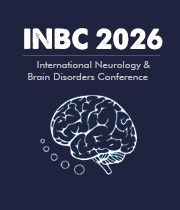Visual Neuroscience
Visual neuroscience is the study of the brain's ability to process visual information and how this visual information contributes to cognitive processes. It is a branch of neuroscience that attempts to understand the neural mechanisms that enable us to perceive and process visual information. It investigates how the retina, visual pathways, and the visual cortex are involved in processing visual information as well as how perceptions interact with cognitive processes such as attention, decision making, and memory. Research in visual neuroscience has advanced hugely over the last couple of decades and continues to do so. In understanding how the visual system works, scientists and neurologists have made great strides in understanding how other aspects of cognition are involved in the process. For instance, research has suggested that the visual system is intricately connected with the limbic and oculomotor systems, allowing the visual perception to influence our emotional states and behaviors. Tools such as eye-tracking, functional magnetic resonance imaging (fMRI), and transcranial magnetic stimulation (TMS) are some of the commonly used tools in visual neuroscience research. Eye-tracking allows researchers to measure where an individual is focusing their gaze and by combining this with other brain imaging techniques like fMRI, they can determine the various neural areas involved in visual processing. TMS allows research participants to be stimulated electrically using magnetic fields and gives scientists insights into how the primary visual cortex reacts to these stimuli. Visual neuroscience is an incredibly important area of research as it helps us to understand the complex interactions between our visual system and the rest of our brain circuitry. By studying these processes we can gain greater insights into how our brain works and further our understanding of the normal functioning of the human brain as well as providing invaluable insights into neurological and psychiatric disorders.

Joe Sam Robinson
Mercer University, United States
Robert B Slocum
University of Kentucky HealthCare, United States
George Diaz
Memorial Healthcare Systems, United States
Daniel Curry
Texas Children’s Hospital, United States
Zhenhuan Liu
Guangzhou University Chinese Medicine, China
Kiran Ghotra
Lake Erie College of Osteopathic Medicine, United States




Title : Atypical presentation of Juvenile myoclonic epilepsy in a 16-year-old female: A Case Report
George Diaz, Memorial Healthcare Systems, United States
Title : What we don’t know about hydrocephalus and It’s management
Daniel Curry, Texas Children’s Hospital, United States
Title : Artificial intelligence-driven DWI and FLAIR for the detection of early stroke changes: A systematic review
Shari L Guerra, The Medical City, Philippines
Title : Mapping neuroplasticity in occupational therapy: Evidence-based interventions with measurable neural outcomes
Jessica Marchant, Texas Woman's University, United States
Title : Non-pharmacologic management of orthostatic hypotension in inpatient rehabilitation: A quality improvement initiative
Laura Steakin, Rehabilitation Institute at Sinai, United States
Title : Non-pharmacologic management of orthostatic hypotension in inpatient rehabilitation: A quality improvement initiative
Mackenzie Weber, Rehabilitation Institute at Sinai, United States